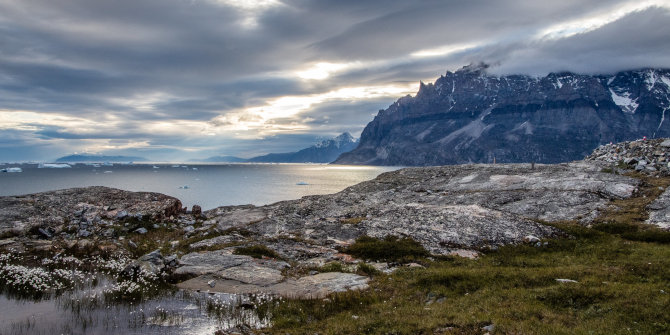 President Trump’s offer to buy Greenland reflects an increased American interest in the territory. As Jon Rahbek-Clemmensen writes, while Greenland will not be sold any time soon, complicated trilateral negotiations will commence, where Denmark will have to strike a balance between several pressures.
President Trump’s offer to buy Greenland reflects an increased American interest in the territory. As Jon Rahbek-Clemmensen writes, while Greenland will not be sold any time soon, complicated trilateral negotiations will commence, where Denmark will have to strike a balance between several pressures.
Although President Trump’s recent offer to buy Greenland from Denmark was always unlikely to succeed, the idea did not come out of thin air. As I have argued elsewhere, it reflects a general fear of Russian and Chinese encroachments. The American radar installations in Thule are important nodes in its missile defence and early warning system, while Greenland’s ports, airports, and seabed could become useful for hunting Russian and Chinese submarines in the Arctic and North Atlantic.
To secure its position on the island, the United States must ensure that Russian fighters cannot take out the radars at Thule and that Chinese economic influence cannot be used to undermine the American presence. This, in turn, requires new American military infrastructure in Greenland, that existing dual use infrastructure (especially airports) is compatible with American fighter aircrafts, and that formal or informal investment restrictions can be put in place.
While buying the island seemed to be the easy solution, the Danes and Greenlanders were adamant in their rejection of the offer. Most Danish elites have accepted that Greenland gets to decide its own fate; Denmark cannot sell what it does not own. At the same time, Greenland strives to become independent and it would be unlikely to be satisfied with merely becoming part of another country. The US cannot simply dispense with the Danes and Greenlanders through “a large real-estate deal”; instead, securing the American position in Greenland will involve negotiations and a compromise between the three parties. For Denmark, these discussions will involve a cumbersome balancing-act between remaining in good standing in Washington, not stepping on Greenland’s toes, and maintaining Danish sovereignty in Greenland.

Credit: helen@littlethorpe (CC BY-NC-ND 2.0)
First, keeping a good relationship with the United States is the beginning and the end of Danish foreign and security policy. Since the Second World War, Danish governments – be they socialist, conservative, or liberal – have viewed the American presence in Europe as central to deterring Russian aggression and avoiding dominance by or competition between Germany and France. Since the 1990s, Denmark has become a ‘boy scout’ ally that always participates in the sharp end of American military operations and looks out for American interests in general, in the hope that the US will continue to see NATO involvement as valuable and give special favours to Denmark.
During the Cold War, the Danes used Greenland actively in this regard. In NATO negotiations, they tried to “play the Greenland Card”, whereby they attempted to gain leniency for Denmark’s lukewarm involvement in the alliance in exchange for facilitating American security interests in Greenland. While the “Greenland Card” lost its value as military tensions in the Arctic ebbed after the fall of the Soviet Union, many policymakers in Copenhagen hope that it is in line for a revival due to the new American focus on China and Russia. Specifically, the Danes hope that Washington will lessen its criticism of Denmark’s small defence budget in NATO discussions (Danish defence expenditures are expected to reach 1.5 percent of GDP in 2023) in exchange for helping the United States secure its position on the island.
Second, unfortunately for the Danes, Greenland wants to have a say as well. The Greenlanders have gained increased autonomy since the 1970s and today they have a roadmap to independence that spells out how they can gain control with specific issue-areas and finance their government through resource revenues. The Greenlanders increasingly want to have a say in foreign policy decision-making, even though foreign and security policy remains within the purview of the Danes.
As the American security interests involves domestic issue-areas that are controlled by the Greenlanders (e.g. transportation policy when related to airports, resource policy when related to Chinese investments), they will naturally have a seat at the table. They will use that seat to extract concessions from Denmark and the United States, most importantly economic benefits, such as infrastructure investments, and diplomatic recognition. Greenland’s involvement in the negotiations obviously makes using the Greenland Card more complicated for the Danes, as Greenland and Denmark will compete with each other to maximise their individual share of the concessions from the Americans.
Finally, while Denmark has an interest in building closer ties with the United States, it simultaneously has to stand its ground vis-à-vis Washington. Both Greenland and the United States will be tempted to try to cut Denmark out of the loop. Some Greenlandic politicians will see it as a chance to gain a larger share of the concessions from the Americans and standing up to the former colonial power is often popular among Greenlandic voters. Indeed, several Greenlandic politicians have already announced that Greenland should negotiate directly with the United States. For the United States, bilateralising the talks will allow them to “cut out the middleman” and perhaps it will be easier to strike a deal with Greenland if it is isolated from the Danes.
Even if they manage to stay at the negotiating table, an additional challenge for the Danes will be to ensure they retain control over the American presence on the island. Due to Greenland’s size and the relatively meagre Danish presence, it will be difficult for Denmark to get an overview of American activities. The United States has previously expanded its presence in Greenland without notifying the two other parties, as it is supposed to according to the existing agreements. When the American presence grows, such incidents will likely be more prevalent, unless procedures are created for preventing them.
The United States will not be buying Greenland anytime soon. However, even if the current set-up continues, an increased American presence on the island will involve complicated negotiations that pose several challenges for Denmark.
Please read our comments policy before commenting.
Note: This article gives the views of the author, not the position of EUROPP – European Politics and Policy, the London School of Economics, the Royal Danish Defence College, or the Danish Armed Forces.
_________________________________
 Jon Rahbek-Clemmensen – Royal Danish Defence College
Jon Rahbek-Clemmensen – Royal Danish Defence College
Jon Rahbek-Clemmensen is an Associate Professor at the Royal Danish Defence College and he holds a PhD from the LSE. His research interests include Arctic politics, Danish foreign and security policy, and transatlantic relations. Among his publications is ‘Greenland and the International Politics of a Changing Arctic’ (Routledge, 2017, with Kristian Kristensen).






The Danes should have treated it with the contempt it deserves and offered to swap it for Manhattan island. Hawaii and Texas. Of course. The Americans in those places would have to move out. Maybe to Greenland.